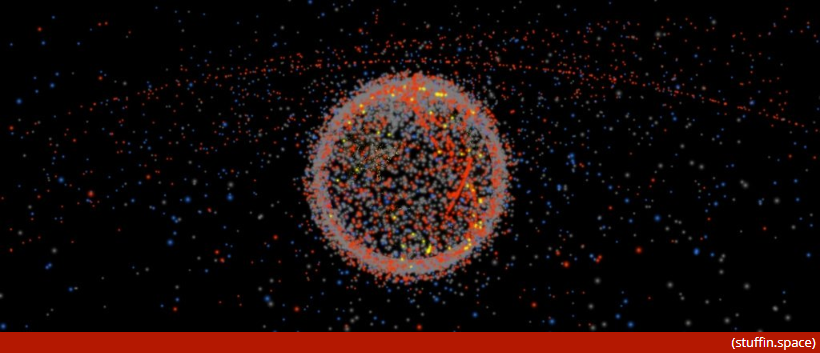Wherever we humans go, we leave behind a mess. That goes for space, too.
人类所到之处都是一片狼藉,太空也不例外。
Today, our species is responsible for more than 500,000 pieces of junk hurtling around Earth at phenomenal speeds, and if we don't start actively removing the largest pieces, the risk of collisions will only grow worse.
现在人类要为超过500,000个绕地球高速飞行的垃圾负责,如果我们再不积极行动起来清理大型垃圾,碰撞的危险只会越来越大。
"Imagine how dangerous sailing the high seas would be if all the ships ever lost in history were still drifting on top of the water," says Jan Wörner, European Space Agency (ESA) director general.
欧洲航天局(ESA)局长Jan Wörner说:“想象一下如果曾经失踪的所有船只都漂浮在水面上,在公海航行会有多危险。”
"That is the current situation in orbit, and it cannot be allowed to continue."
“目前轨道上就是这种情况,不能再任其继续发展了。”

It's almost as if we need a tow truck to remove all the thousands of failed satellites from our orbit; incidentally, that's exactly what the ESA is working on.
就好像我们需要一辆拖车把成千上万颗失灵的卫星拖离轨道。顺便说一句,这正是欧洲航天局正在研究的。
By 2025, the agency plans on launching the world's first orbiting junk collector, a four-armed robot that tracks down space waste like Pac-Man in a maze.
该机构计划到2025年发射世界上第一个轨道垃圾收集器,这个4条手臂的机器人就像迷宫里的吃豆子的人一样追踪太空垃圾。
The first-of-its-kind mission, known as ClearSpace-1, will start out small, collecting only a single piece of space junk to prove the concept works. The target in this case is called Vespa, a leftover remnant from ESA's Vega rocket launch in 2013.
第一次这样的任务被称为ClearSpace-1(清理太空-1),先执行小任务,只收集单件的太空垃圾来证明这一概念的可行性。这一任务的目标是Vespa,是欧洲航天局2013年发射织女星火箭留下的残骸。
This piece of junk weighs roughly the same as a small satellite and has a simple shape that should make it easy to grab with four robotic arms. once it's safely in the arms of the garbage collector, it will then be dragged out of orbit and allowed to burn up in the atmosphere.
这件垃圾的重量几乎相当于一颗小型卫星,形状简单,机器人的四只手臂应该能很容易地抓取。一旦被垃圾收集器安全抓取,就会被拖出轨道,在大气层中烧毁。







